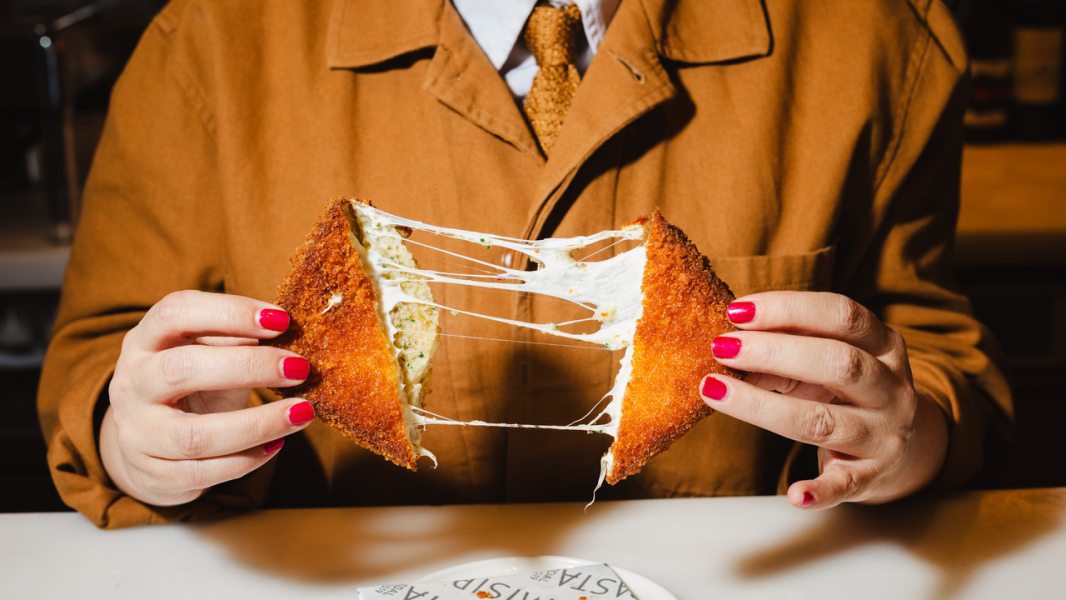
Save this storySave this storySave this storySave this storyYou’re reading the Food Scene newsletter, Helen Rosner’s guide to what, where, and how to eat. Sign up to receive it in your in-box.
Few people in New York City understand pasta the way the chef Missy Robbins understands pasta. Having spent years overseeing some of the city’s most electrifying pasta restaurants (plus a few heading the kitchen at Chicago’s legendary Spiaggia, a pasta paradiso if ever there was one), she’s more than amply proved her mastery of the medium. This extends to the expressivity of a noodle’s form, sensual or zany, and to the harmony of marrying a particular shape with exactly the right sauce, which carries the same satisfying sense of inevitability that comes from hanging a picture just right. There is artistry, too, of course, in the act of cooking pasta, coaxing them along a textural spectrum between toothsomeness and pliancy. Robbins might boil a dried, extruded noodle so that it still has a filament of hardness running through it, whereas she’ll let her hand-cut specimens slump with jellyfish languor. There’s no better place to experience Robbins’s touch than at Lilia, her chic Williamsburg restaurant with an ever-changing menu that encapsulates her philosophy of luxurious Italian simplicity. Unfortunately, in the eight years since its opening, Lilia has remained impenetrably booked—you can’t get a table, I can’t get a table. (If you know people who can get a table, hold them tight.)
Misipasta
46 Grand St., Brooklyn
(Dishes $14-$24.)
If you can’t get into Lilia, you might end up at Misi, Robbins’s lower-key spot on the other end of Williamsburg. When I close my eyes at Misi, I have a great time; the pastas are terrific, and the vegetable dishes are zingy and bright. But I’ve always struggled with the room, which is glass-walled and ceramic-floored. Its planes of gray and black feel hard-edged and sterile, which is to say entirely at odds with the emotional warmth of the food coming out of the kitchen. So I feel a bit like Goldilocks at Robbins’s newest spot, Misipasta, which opened last summer, again in Williamsburg, on the ground floor of a charming brick row house on an especially charming stretch of Grand Street. It’s a market as much as a restaurant, and the narrow room is mostly given over to operational space, including an airy pasta-making area in the front and an efficient galley kitchen in the back. The walls are lined with shelves of groceries; there’s a refrigerator case stocked with jars of pasta sauce and fresh cheeses and bundles of cut herbs. A glass counter shows off trays of fresh pastas by the pound and other prepared foods. There is also a brief and focussed eat-in menu of, more or less, exactly what a tired and hungry person wants to eat.
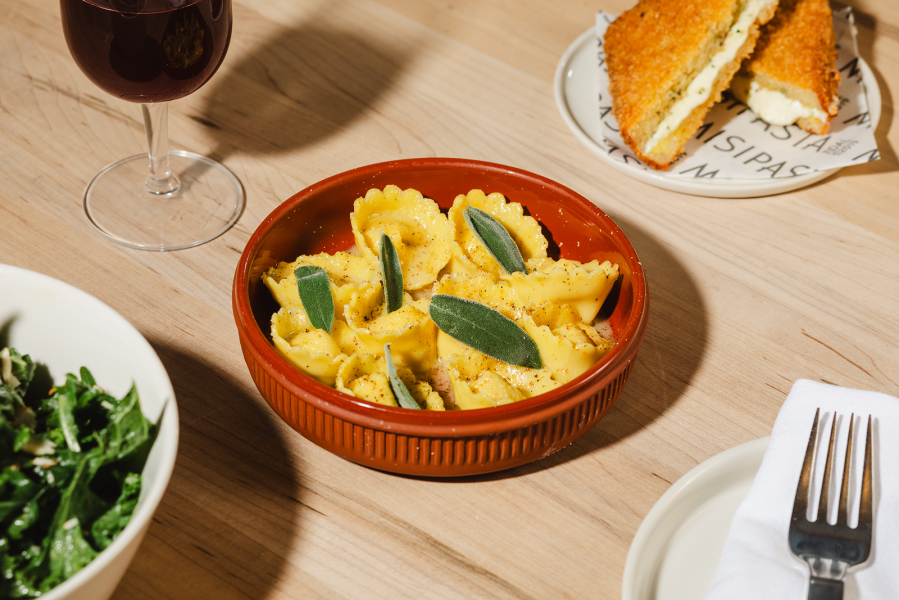
There are only two pastas on the dine-in menu, including spaghetti and luscious cappelletti filled with a heady mixture of Parmesan, ricotta, mascarpone, and prosciutto, dressed simply in butter and sage.
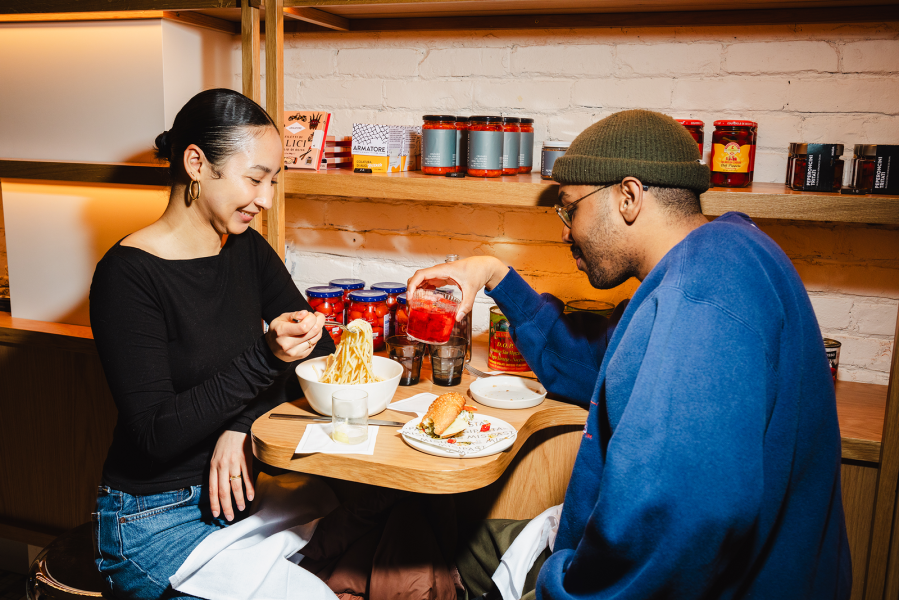
There are around twenty seats inside the restaurant, all of them counter stools, and one or two are nearly always empty.
You don’t have to be tired and hungry to eat at Misipasta, though I tend to be. It’s open late, by post-pandemic standards—diners are seated through around 10 P.M.—and I often find myself rolling in the door after giving up on a less-than-thrilling meal elsewhere, and not wanting the evening (the time, the stomach space, the babysitter, the sense of life as full of joy and promise) to be wasted. There are about twenty seats indoors, all of them counter stools, and one or two are nearly always empty. The lights are just dim enough to soothe, the tidy menu of cocktails and bitter Italian sodas ready to offer a bit of relief. The air smells like Parmigiano and butter, the sound system is playing the Pointer Sisters. There’s an enormous green salad—bitter mustard greens, frilly arugula, and hunks of sweet dates and almonds tossed in a sharp vinaigrette—served in a satisfyingly big, deep bowl. There’s mozzarella in carrozza, the Italian dish of cheese layered between two slices of bread and then deep-fried until golden—a kingly grilled cheese. You can get a plate of nutty-funky prosciutto served with enormous, fluffy gougères. I recommend eating both in the same bite, like biscuits and country ham gone zippy Italiano.
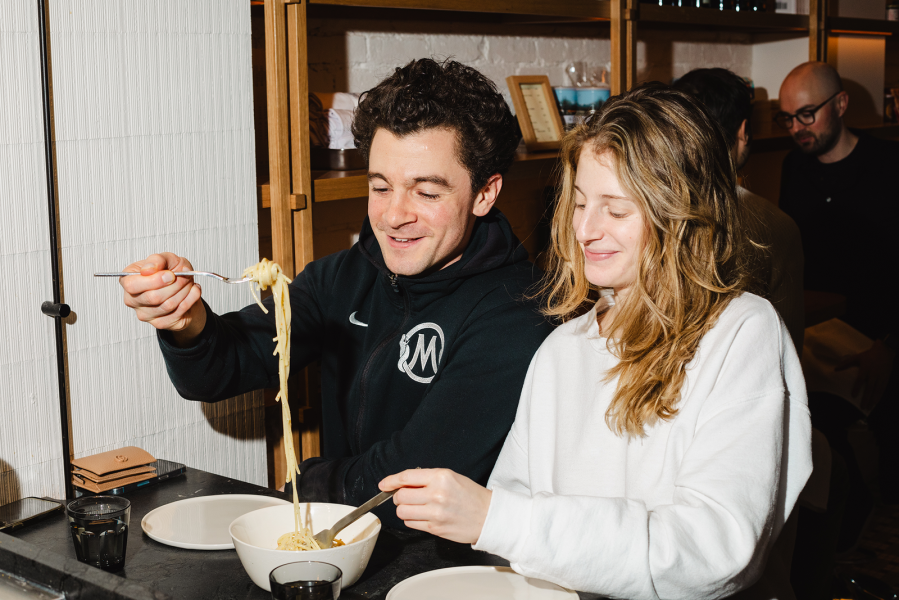
The shop and restaurant are open all day, and at 11 A.M. or 3 P.M. you can breeze through and have the place basically to yourself.
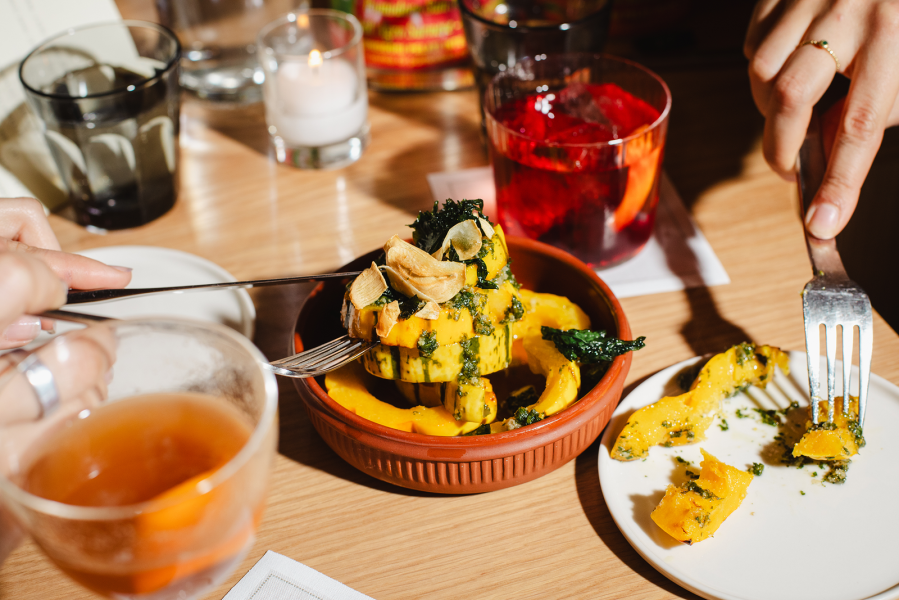
Delicata squash sotto grasso, with bagna vert and crispy garlic.
Despite the dozen or so shapes of pasta available in the to-go case, Misipasta offers only two pastas on the dine-in menu, but two is enough. The spaghetti, subtle and nourishing, is cooked just to the stern side of al dente, then tossed with garlicky butter emulsified with the starchy pasta cooking water, and sprinkled with shaved bottarga and crisp bread crumbs. Luscious cappelletti—filled, folded pasta that look sort of like overlarge tortellini—are filled with a heady mixture of parmesan, ricotta, mascarpone and prosciutto, dressed simply in butter and sage, and arranged tidily in a small, straight-sided terra-cotta bowl. It’s the sort of pasta dish you’re always craving without even realizing it, the sort of pasta you want to just shovel into your mouth—but their size and heft force you to slow down, to think not bowl by bowl but bite by bite. There’s often a third pasta available only for to-go orders, a scoop of tiny pastina (star-shaped micro-pasta) in a container of brodo, golden and intense, and so rich with collagen that it leaves your lips sticky. This is the sort of potent, soul-nourishing, complexly layered noodles-in-broth situation that Campbell’s chicken-and-stars soup always hopes to see when it looks in the mirror, before resigning itself to the disappointments of reality.
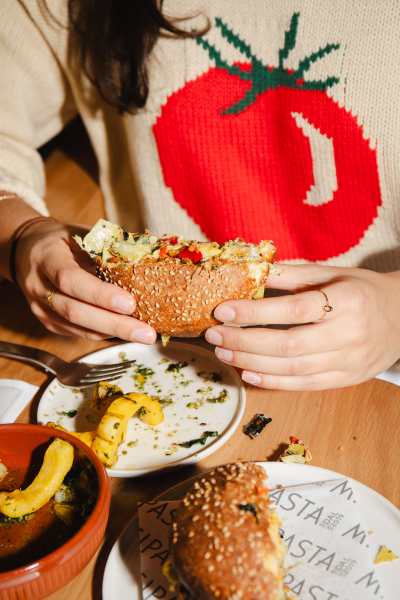
One of the city’s great secret sandwiches: a mess of grilled artichoke hearts held together with tangy marinara and oozing provolone cheese.
Helen, Help Me!
E-mail your questions about dining, eating, and anything food-related, and Helen may respond in a future newsletter.
I worry, a little bit, that the secret of Misipasta will get out, and that the friendly, neighborhoody feel of the place will tighten up like a corset, and that it’ll become yet another impossible-to-enter room behind the digital gates of the Resy app. But the shop and restaurant are open nearly all day—at 11 A.M. or 3 P.M. you can breeze through and have the place basically to yourself—and, when the weather gets just a smidge warmer, the big and beautifully appointed back yard will reopen, nearly doubling the seating capacity. Have an espresso, fruity and bitter. Have a slice of crispy farinata, a lacy-edge chickpea-flour pancake aromatic with rosemary. Have one of the city’s great secret sandwiches, an enormous mess of marinated and grilled artichoke hearts, spiked with hot chilis and barely held together by oozing provolone cheese. Buy a pint of Robbins’s satiny hazelnut gelato. Get a pound of pasta—frilly lumache, or long tubes of paccheri—and a jar of thirty-clove sauce, heady with garlic. You won’t make pasta nearly as good as Robbins’s at home—even with the same ingredients, even with the same tools, some things just have to get all the way into your bones—but it doesn’t hurt to try. ♦
Sourse: newyorker.com






